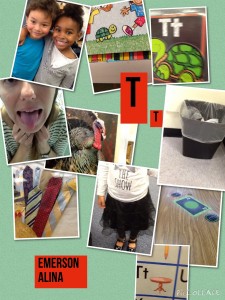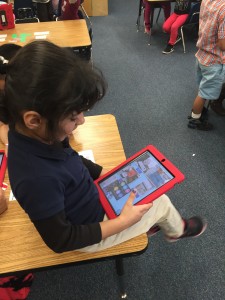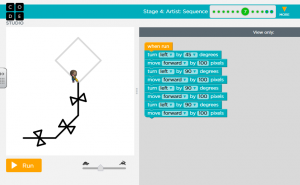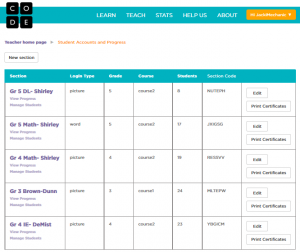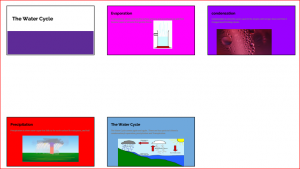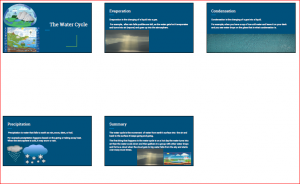Many teachers are familiar with the Michael Rosen classic, We’re Going on a Bear Hunt. Kindergarten classes at William Ramsay are using this text as inspiration to go on iPad scavenger hunts. Students are using the iPad camera to walk around the school and take pictures of shapes, numbers, letters, rhyming words, and more. After collecting pictures of the taught concept, students design a collage with pictures, words, and colors using the app Pic Kids. Students of all ages can use this app with its simplistic design and icon based features. What could your students hunt for inside and outside of the school?
elementary
Charles Barrett Meteorologists
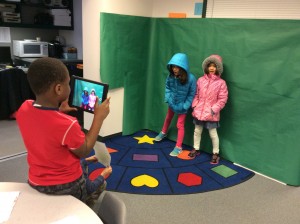 In February, students in Ms. Wines 2nd grade class at Charles Barrett investigated weather. Students identified common storms such as thunderstorms, blizzards and tornadoes; then wrote weather reports that reflected their understanding. Using an app called Green Screen, students recorded themselves as meteorologists in the storm! They smashed their Green Screen video into iMovie, adding ‘news’ theme music and ‘news’ captions.
In February, students in Ms. Wines 2nd grade class at Charles Barrett investigated weather. Students identified common storms such as thunderstorms, blizzards and tornadoes; then wrote weather reports that reflected their understanding. Using an app called Green Screen, students recorded themselves as meteorologists in the storm! They smashed their Green Screen video into iMovie, adding ‘news’ theme music and ‘news’ captions.
Book Reviews!
Students in Ms. Mull’s 1st grade reading class recorded each other using the iPad talking about a book they had recently read. They used an outline graphic organizer that contained key components they were suppose to include in their review such as: title, setting, characters, and problem. In the end, students could recommend the book and describe how many ‘stars’ they would give it! As a bonus, students took their video and placed it in iMovie where they could add background music to their book review. Students enjoyed reviewing books, listening to themselves on a video, listening to their friends reviews and adding music!
Nonfiction Readers!
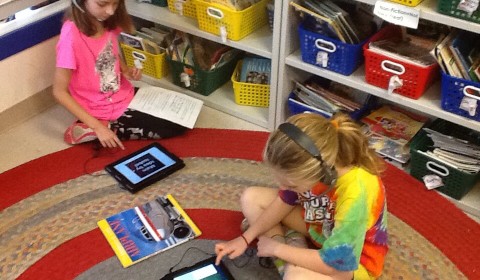
Students in Ms. Fisher’s 3rd grade class at George Mason spent time reading and exploring nonfiction texts. They discovered headings in nonfiction text contain key words that give a preview of main ideas they may read about in a section! 3rd graders learned nonfiction texts contain certain features they won’t usually find in fiction books such as: a table of contents, glossary, bold words, and headers. Students read their nonfiction texts, then created a shadow puppet using an iPad explaining main ideas of a section in their book.
Fraction E-Books!
A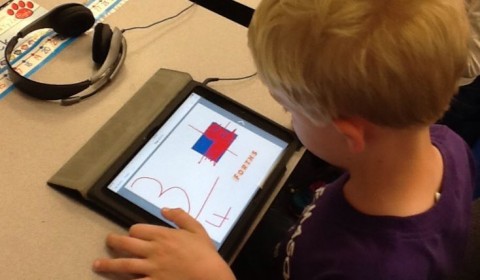 t George Mason Elementary, students in Mrs. Dean’s 1st grade class demonstrated their understanding of fractions by creating e-books. After a brief introduction of the app Book Creator, students were given the opportunity to work on pages of their books explaining different types of fractions and what the fractions represented. Book Creator then gave them the opportunity to download the book as a PDF, or save it as a movie with them discussing elements of fractions. Students then took their e-book ‘movie’ and added light background music in the app iMovie.
t George Mason Elementary, students in Mrs. Dean’s 1st grade class demonstrated their understanding of fractions by creating e-books. After a brief introduction of the app Book Creator, students were given the opportunity to work on pages of their books explaining different types of fractions and what the fractions represented. Book Creator then gave them the opportunity to download the book as a PDF, or save it as a movie with them discussing elements of fractions. Students then took their e-book ‘movie’ and added light background music in the app iMovie.
The Benefits of Coding are No Secret at John Adams
Coding, a 21st Century Skill which is required in jobs from farming to medicine, is engaging, fosters collaboration, and promotes critical thinking and problem solving. Several classrooms at John Adams Elementary participate in weekly coding classes. Students are exposed to a variety of coding platforms, such as Code.org, Scratch and Bitsbox. While solving puzzles, students reinforce and expand upon skills taught in math and science.
Patrick Henry Students Participate in STEAM Night
On Thursday, April 7, 2016, Patrick Henry students participated in the third annual STEAM (Science, Technology, Engineering, Arts, and Mathematics) Night. Science Fair projects were on display in the cafeteria while a variety of other STEAM related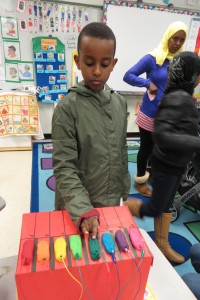 activities occurred throughout the building. Students created Ooblek, garden gloves, and tallest towers. Students also measured the distance of paper airplanes they built
activities occurred throughout the building. Students created Ooblek, garden gloves, and tallest towers. Students also measured the distance of paper airplanes they built 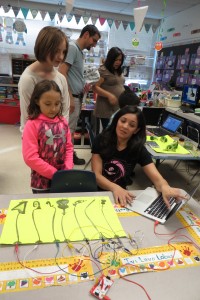 and flew, explored mealworms and played math games. A special thanks to the PTA and community organizations, Cyber Jujitsu, Metamorphosis Arts and Enrichment, and Windjammers who made STEAM Night a huge success
and flew, explored mealworms and played math games. A special thanks to the PTA and community organizations, Cyber Jujitsu, Metamorphosis Arts and Enrichment, and Windjammers who made STEAM Night a huge success
JH Students are Stuck on Magnets!
Second grade students at Jefferson Houston K-8 school used the Shadow Puppet App to share what they know about magnetism. See if you can learn about “attract” and “repel” from these super scientists!
Chromebooks at LCTA…making learning engaging
Lyles Crouch Traditional Academy’s (LCTA) principal Dr Zissios knows students need 21st century skills to be college and career ready. With the assistance of the PTA each third grader at LCTA was issued a chromebook, in addition to the chromebooks the district provided to the fourth and fifth graders. Some students are dependent on school resources so the one-to-one program in grades 3 – 5 promotes equity and ensures all students have equal access. All teachers at LCTA use technology as a regular part of their instructional day.
To effectively integrate technology, recently the third graders at LCTA created Google slide presentations as part of a transfer task for the Water Cycle. Here are some of their examples.
Robotics at Ramsay: Day 2
Engagement and enthusiasm reached new levels at Ramsay this week, as 5th grade students participated in the second of their 2-part robotics lesson, using a Hummingbird Duo robotics kit to plan, create, and test out a two-wheeled robotic vehicle!

After reviewing the basics of hardware, software, and circuitry, the students decided as a group to create a “object avoider” robot. They next planned out the specific actions that their vehicle would complete. In the end, they decided upon a robot that could move forward, and, when encountering an object in front of it, would stop, turn 90 degrees to the right, and move forward again.
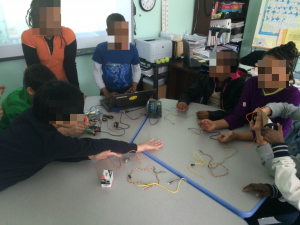
Within thirty minutes, the students had not only completed their robot, but also were able to add a visual component to the vehicle’s movements. When the robot stopped, a light turned red. As it turned, the light turned purple, and as it moved forward, the light turned green.
With the last 5 minutes of the class period ticking away, they decided to add an additional sensor that would detect sound levels. The students programmed the robot to stop if the sensor reached a certain sound level. This enabled them to yell at the robot to stop if it was about to roll off of the table!
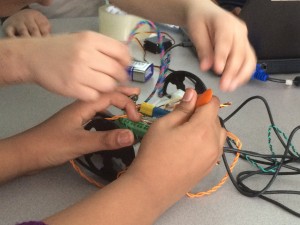
With clear STEM and project-based learning connections, the Hummingbird Kit proved to be a resourceful classroom tool. For more information about the Hummingbird Kit and robotics in ACPS, please contact your building TIS or the Instructional Technology Coordinator, Daniel Foreman.
